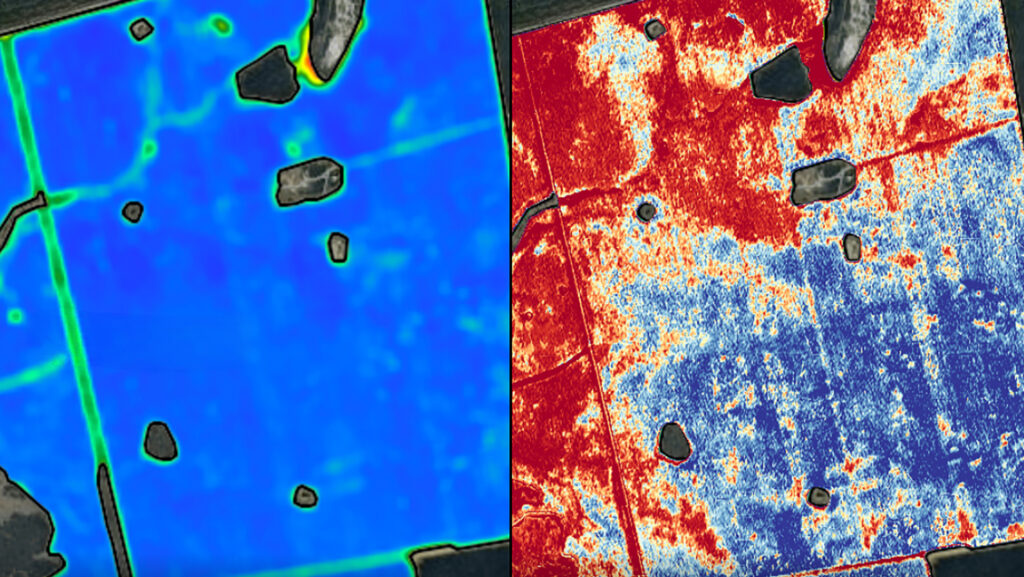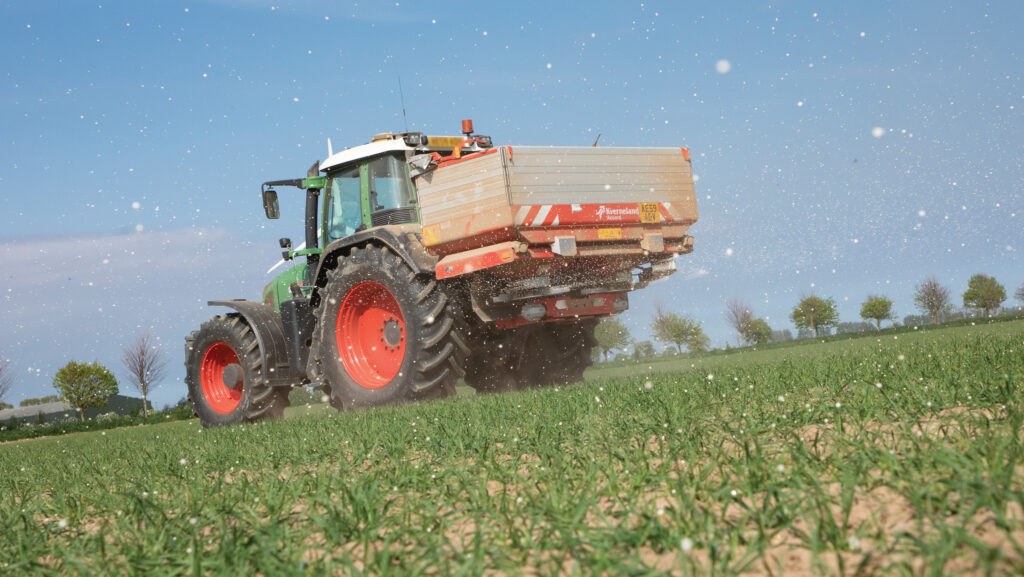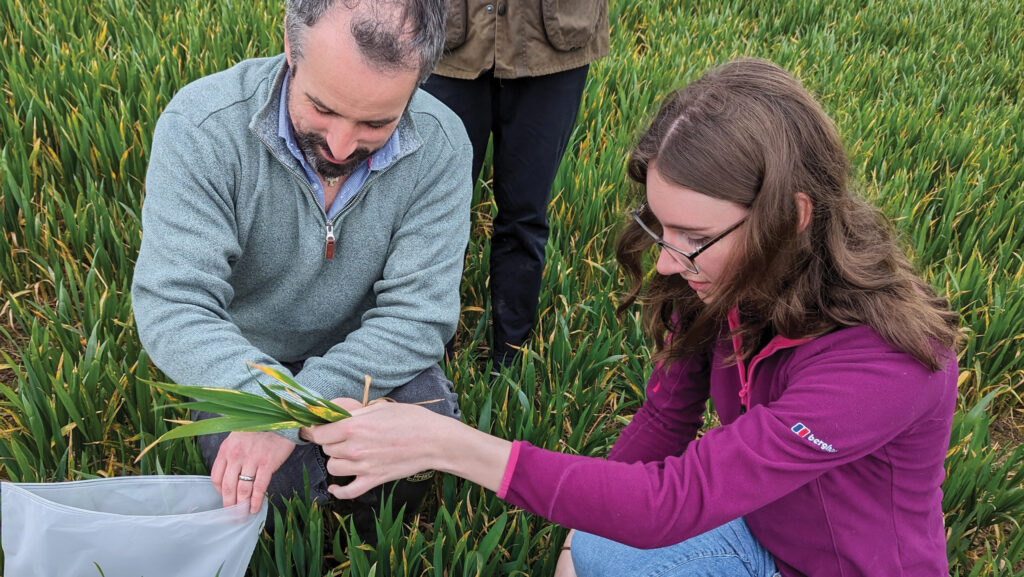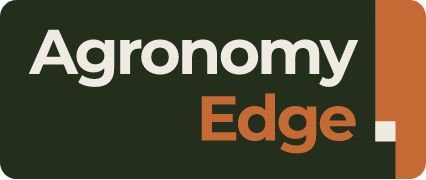How next-gen satellites take guesswork out of N management
 © Messium
© Messium The science behind optimum nitrogen rates is well established, yet in practice, most crops are still either over- or under-fed.
While several precision tools and sensors aim to solve the problem, many still offer only part of the picture, especially when it comes to understanding crop biomass.
See also: How to calculate cost-effective N fertiliser rates
Satellite imaging has been the obvious answer for growers and agronomists, because it is relatively cheap to access, offers the ability to map the whole farm and provides a valuable overview of crop performance.
However, for the previous generation of satellites, cloud cover remains a challenge, and they can generally only recognise crop biomass by detecting different levels of green density in the crop – they cannot measure nitrogen.
Now, thanks to advances in hyperspectral satellite technology, UK agri-tech firm Messium has developed a system which claims to deliver lab-quality nitrogen concentration data directly from space.
Using a combination of hyperspectral satellite data (including data beyond the visible spectrum), advanced crop growth models (DSSAT and APSIM), and artificial intelligence (AI) analytics, wheat growers can get actionable insights from real-time information on the crop’s total nitrogen content.
George Marangos-Gilks, co-founder of the company, says: “The difference is NDVI [normalised difference vegetation index, the current crop scanning standard] uses just three wavelengths, while hyperspectral satellites use 160 wavelengths.
“This offers the equivalent of undertaking a lab test every 5sq m of your farm every week.

© GNP
“Hyperspectral satellites go into the infrared and invisible spectrum. So just as we can see different colours, every chemical on earth will absorb and reflect a different wavelength, so using this technology we can very clearly see nitrogen in the crop, the amount and its intensity.
“While NDVI provides reliable biomass estimates, it offers no insight into nutrient balance.
“Messium integrates existing agronomic research to assess whether biomass is under- or over-fertilised, uncovering cases of high biomass with low nitrogen, and the reverse.”
Hyperspectral satellites are already being used by other industries, including mining companies to look for metals such as gold, copper and lithium, and gas companies to spot gas leaks on pipelines.
The US space agency Nasa launched its first hyperspectral satellite 20 years ago, and last year the first commercial satellites were launched. Next year Messium will have access to 15 satellites for image capture.
Actionable insights
Using advanced crop growth models, users are then given fertilisation recommendations which include precise timings and quantities of nitrogen fertiliser, converted to variable-rate application (VRA) files.
The program gives insights into crop status, timing until crop deficiency, field prioritisation by greatest need, and a return-on-investment calculation.
Users also receive high resolution nitrogen heatmaps which pinpoint areas of over- and under-fertilisation, precise to a 5x5m resolution.
In the first season trialling the software, Messium found that out of the 47 pilot farms across Europe, 51% of fields were over-fertilised by up to 40% and 39% were under-fertilised by up to 28%.
George says: “Our key learnings from UK trials found timing is everything. If you’re fertilising and the crop has been deficient for 1-2 weeks, there will be a big yield loss.
“If you’re applying nitrogen when the crop is saturated with excess nitrogen, it’s much harder to absorb it and nitrogen use efficiency is lower.”
Trials in 2024 at Hutchinson’s East Anglia Helix Farm highlighted this. Eight different N rates ranging from 100kg-250kg/ha were applied to wheat, with the farm standard being 200kg/ha.
“Messium saw there was luxury nitrogen in the plots, so we asked the grower to apply nitrogen 12 days later than the rest of the field in one strip. It was far more able to uptake N when it was applied and it yielded 0.6t/ha more.”
George says the rate was increased by only 2kg/ha, but much more got into the crop and they saw a much better result, with it also yielding more than the 250kg/ha strip.
“The nitrogen dilution curve tells us when the field is likely to be deficient, while crop growth modelling tells us how much to apply.”

© Messium
In 2025 Messium carried out trials on 83 farms across the Northern Hemisphere, 46 of those in the UK.
The results showed an average 8% increase in nitrogen efficiency, with about three quarters of farms recording yield gains of 5-6% on average, and top-performing fields achieving a 1t/ha boost.
When accounting for nitrogen cost, the estimated gross margin improvement was £50-£60/ha.
Messium aims to deliver a minimum 4:1 return on investment for growers, and the future price for the service will reflect the value that can be driven.
With backing from Innovate UK, the UK and EU space agencies and private investors, the firm has secured a total of £5.3m investment which it says will help the commercial rollout of its platform in the UK, Europe and Australia.
It is working alongside Hutchinsons and Frontier as its strategic UK trial partners.
Case study: Martin Dairy, Bodmin, Cornwall
Farm facts
- 950 dairy cows plus 800 followers
- 200ha of maize, 91ha of feed wheat (Palladium and Mayflower), 51ha of feed barley
- Part of Hutchinsons’ Helix Farm network
Richard Martin, a partner at Martin Dairy near Bodmin, Cornwall, and Hutchinsons Helix Cornwall Farm host, has been carrying out tramline trials of the software for the past two seasons.
With a lot of muck and slurry in the rotation, Richard and his agronomist James Whatty were interested to see if Messium’s model could adapt to their predominantly organic nitrogen-based system.
As a Helix farm, they have been carrying out nitrogen trials for some time, covering N-mins, slurry testing, bacterial nitrogens and tramline trials to find optimum rates.
James says: “Dairies and their level of muck and slurry within the cropping system makes any sort of nutrition monitoring or prediction a challenge, and double cropping between and up to six grass cuts is really testing the RB209 model.”
Despite much of the country suffering the effects of the weather this harvest, mid-Cornwall had what James describes as an “eastern harvest”, with nitrogen the main limiting factor in many crops due to such high levels of sunlight.
James says: “Very few growers had to dry anything, and all went well with above-average yields. Even our low-nitrogen treatment strips, which only had a base application of 125kg/ha of granular urea in February, yielded 7.8t/ha.”
The farm standard for nitrogen on wheat is 200kg/ha across three splits, but this season Messium’s recommendation took this up to 237kg/ha across five splits on the crop of late-October drilled Mayflower following forage maize.
The high-nitrogen plot, in which 253kg/ha N was applied, yielded 12.73t/ha, while the Messium plot with 237kg/ha yielded 12.54t/ha.
James says: “We also did a reduced farm standard at 147kg/ha which yielded 10.17t/ha.
Our initial thoughts are whilst 0.2t/ha may not look a lot [of yield return], it’s all about marginal gains, and if improving our timings can lead to increased yields with less N being applied, it has got to be a win-win situation.
When looking at the cost of two passes versus the yield gain, we are still marginally up.
“We also noted the specific weight with Messium was better versus the high-nitrogen plot, when you would usually expect reduced spec weight with higher yield.”
As well as delivering what it claims is the most frequent and accurate remote crop nutrient diagnostics on the market, Messium provides weekly updates on sunshine hours, rainfall, soil moisture and soil organic mineralisation, as well as giving users directional weather forecasts from seven to 14 days and a 56-day forecast.
James says: “Messium’s prediction model and forecasting was also very interesting in terms of telling us when to apply the nitrogen.
“It would say it was going to rain on Monday afternoon and every single time it was right, so forecasting and predictions were very accurate in such a challenging year.”
He says this year there was also a lot of “ground truthing” in the form of biomass sampling between applications, to monitor the crop and cross-reference the satellite data.
“It’s an important part of the Helix network for us to make sure that new technology really is providing the benefit it claims,” he says.
“For us, going forward this aspect of crop modelling and forecasting could not be more important, as seasons appear to be becoming far more condensed with critical work periods and application timings becoming ever more weather dependent.”
N application timings in the trials
- N1 18 February – granular urea
- N2 27 March – Axan
- N3 14 April – Nuram 35
- N4 12 May – Nuram 35
- N5 20 May – foliar nitrogen (N-Durance)

